There are traditionally two ways of protecting an invention in Europe.
The first one is to directly file national patent application (NP) for each State of interest. Each national patent application undergoes a specific examination and granting procedure.
The second one is the "traditional" European Patent. The European Patent Convention (EPC), in 1977 established a unified filing and examination procedure aimed at granting the so-called European Patent. Once granted, the European Patent does not constitute a unitary right since it must be validated in each State of interest chosen among the Contracting States (CS), currently 39, thus originating a "bundle" of national patents (EP-CS). In many EPC Contracting States, validation requires translation of the text (or at least the set of claims) of the European Patent. In addition, each validation is subject to the laws and jurisdiction of the single Contracting States, as well as the related charges.

For a part of the European Union, i.e., the EU Member States participating in the EU Patent Package (CS1), there is a third option provided at the end of the European Patent granting procedure, as an alternative to the “traditional” validations. This third option is available by filing at the EPO a request for the so-called “Unitary Effect” whereby the EP patent, for these States, constitutes a single right known as Unitary Patent (UP). For a transitional period of at least 6 years, but not exceeding 12 years, only one translation of the granted European Patent text needs to be filed to obtain a Unitary Patent. At the end of the transitional period, no more translations need to be filed.
For EU Member States participating in the EU Patent Package (CS1), the Unitary Patent thus offers a further option in addition to the direct national option and the “traditional” European Patent (validations). For Contracting States of the EPC that are not party to the EU Patent Package (CS2) because they are not EU Members or because the EU Patent Package does not apply to their territory, patent protection can only be obtained with the direct national option or the “traditional” European Patent (validations) option.
The EU Patent Package is a new system of laws that aims to create a Unitary Patent valid for the territory of the EU Member States party to the EU Patent Package, and a single court competent for disputes relating to Unitary Patents and “traditional” European Patents. The EU Patent Package comprises the Agreement on a Unified Patent Court (Agreement 2013/C 175/01, commonly referred to as the "UPC Agreement") and two European Regulations (Regulation 1257/12 and Regulation 1260/12).
The Unitary Patent is a single patent that, when fully implemented, will provide uniform protection in the EU Member States participating in the EU Patent Package (CS1 – green-coded states), i.e. all EU Member States except Croatia, Poland, and Spain, which have not joined for the time being.

The Unitary Patent means a European Patent application filed with the European Patent Office (EPO), examined, and granted by the EPO and for which Unitary Effect has been registered following the grant.
The Unitary Patent must be enforced and can be challenged before a new centralized court system generated by the EU Patent Package: The Unified Patent Court (UPC).
- It provides uniform protection in the EU Member States participating to the EU Patent Package.
- It is subject to the payment of a single annual maintenance fee.
- It may only be limited, transferred or revoked, or lapse, in respect of all EU Member States participating to the EU Patent Package.
- It is subject to the exclusive jurisdiction of the Unified Patent Court (UPC).
No. The European Union comprises 27 Member States while, when fully implemented, the Unitary Patent will be available to 24 Participating Member States, i.e., all Member States of the European Union except for (and subject to change) Spain, Croatia, and Poland (Map 1).
Furthermore, the EU Patent Package will enter into force after the deposit of the thirteenth instrument of ratification or accession of the UPC Agreement, including France, Germany and Italy. Thus, upon entry into force of the EU Patent Package, the Unitary Patent may have effect for fewer than 24, presumably 17, states (i.e., only in the Participating Member States that have submitted their instrument of ratification of the UPC Agreement - Map 2). Such Unitary Patents having effect for fewer than 24 Member States will not be extendable to States that ratify the UPC Agreement later. In other words, the territorial extension of a Unitary Patent will be defined on the date of registration of its “unitary effect” and will remain unchanged even if new states join the EU Patent Package.

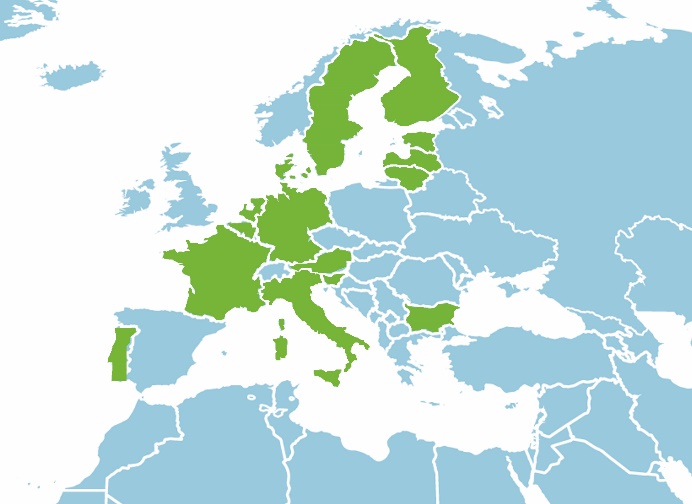
No. A “traditional” European Patent granted can be validated in all 39 Contracting States of the EPC (update 1st October 2022 – Map 1), in addition to providing protection in some non-EPC States under bilateral agreements. When fully implemented, the Unitary Patent will be effective in 24 EU Member States (Map 2). For the time being, it will not be effective in Spain, Croatia, and Poland, which do not participate in the EU Patent Package, nor in EPC Contracting States that are not EU Member States (e.g., Great Britain, Switzerland, Norway, Turkey). For these states, the only chance is to validate the European Patent in the traditional
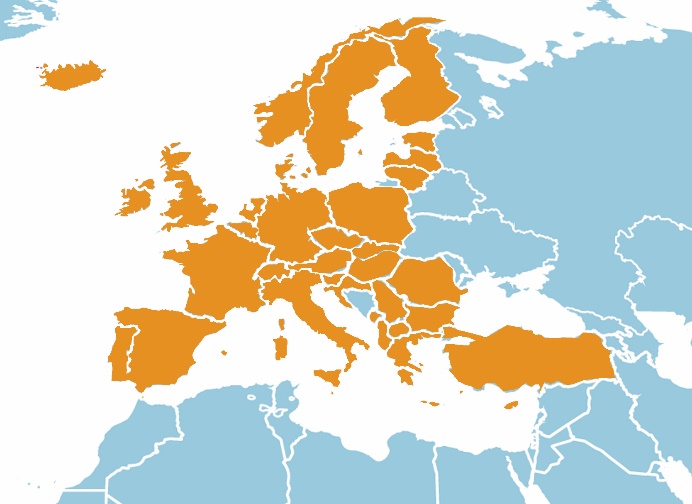
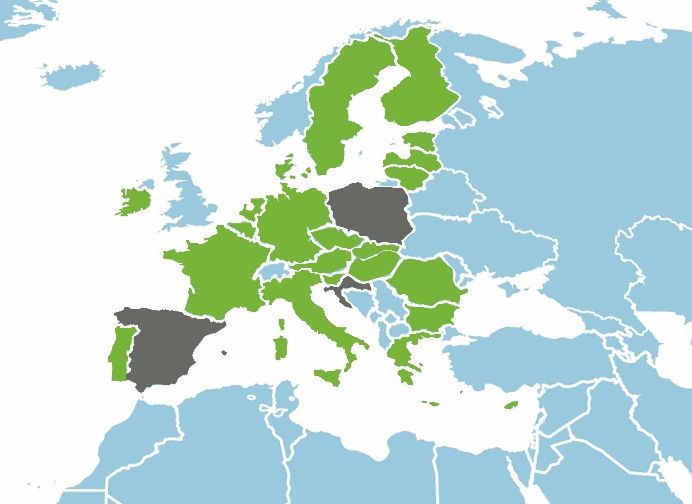
The Unitary Patent is a European Patent granted by the EPO according to the rules and procedures of the EPC, for which the proprietor files a request for unitary effect with the EPO within one month of the publication of the decision to grant.
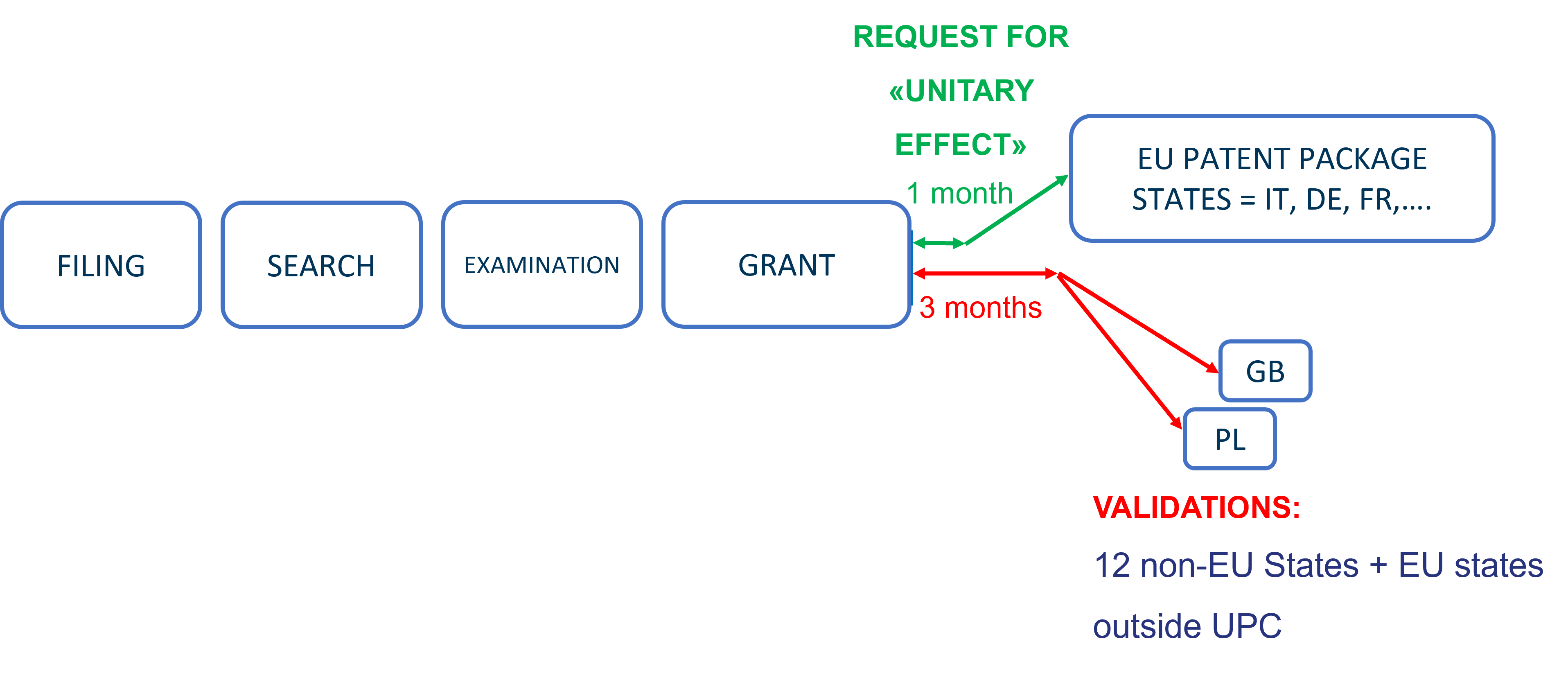
- for European Patents granted after the entry into force of the EU Patent Package
- that have been granted with the same set of claims for all participating Member States (Italy, France, Germany, the Netherlands, Belgium, Luxembourg, Poland, Malta, Cyprus, Greece, Sweden, Denmark, Finland, Estonia, Latvia, Lithuania, Czech Republic, Slovak Republic, Slovenia, Portugal, Austria, Romania, Bulgaria, Hungary, Ireland)
- with reference to all EU Member States participating in the EU Patent Package (i.e., it will not be possible to exclude certain states from a Unitary Patent).
A first factor affecting costs is the filing and granting procedure for the “traditional” European Patent, which remains unchanged from the past, as does its cost.
Another factor is the need to file a translation when applying for the Unitary Patent, after the grant and limited to the transitional period.
Furthermore, after grant, the Unitary Patent will be subject to a single maintenance fee comparable to the sum of the national maintenance fees payable in Germany, France, the Netherlands, and Great Britain.
- The possibility to file a single request for all EU Member States participating in the EU Patent Package, bearing in mind that in the initial transitional period not all states may be available or covered.
- The possibility of obtaining extended protection without the need to prepare translations (when fully operational), which is countered by the risk that, in an infringement case at the UPC, this may alleviate the damage count for some parties (SMEs, ...) who are unable to understand the language in which the patent was granted.
- The possibility, if any, of converting the Unitary Patent into national patents or utility models, the adoption of which is left to national laws.
- The possibility of single renewal, which on the one hand represents a simplification and on the other hand prevents selective abandonment during the 20-year patent term.
- The cost of such single renewal (comparable to the sum of national maintenance fees payable in Germany, France, the Netherlands, and Great Britain) which makes the Unitary Patent advantageous if the territorial interest extends to 4 or more states.
- The possibility for certain parties (SMEs, ...) to receive a lump sum compensation for translations made at the time of filing the European patent application.
- The possibility of uniform protection for all EU Member States participating in the EU Patent Package and for the entire duration of the patent.
- The lack, as of today, of a Unitary Supplementary Protection Certificate (SPC).
- The provision of a single national law governing the Unitary Patent as an object of property.
- The exclusive and non-waivable jurisdiction of the UPC over the Unitary Patent with the possibility of centralised actions against possible infringers and with the risk of centralized revocation or limitation further aggravated by the fact that the validity of the Unitary Patent could be questioned in view of so-called 'national prior rights'.
The UPC consists of a Court of First Instance, a Court of Appeal and a Registry.
The Court of First Instance comprises a central division and local/regional divisions. The central division has its seat in Paris and a division in Munich.
Each Contracting Member State may establish a local division or, together with other Contracting Member States, also depending on the number of actual or foreseeable patent litigation, a regional division of the Court of First Instance.
The Court of Appeal and the Registry shall be in Luxembourg.
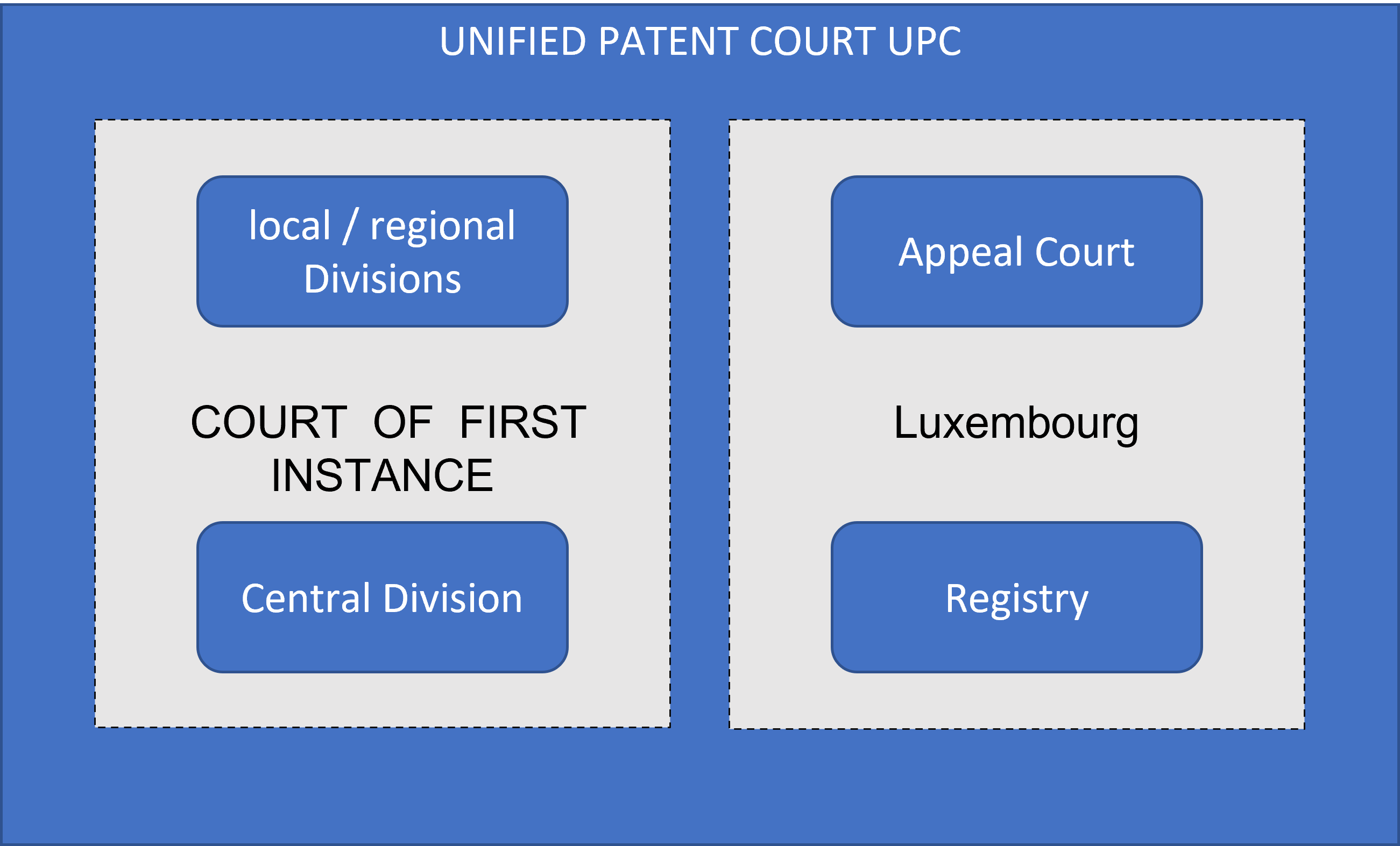
- revocation
- infringement
- provisional and protective measures and injunctions
- declarations of non-infringement
- damages
- The importance of the patented product/process
- The impact of a central revocation
- The 'strength' of the patent
- The risk of infringement spanning several states
- The cost of litigation, damages, and court costs before the UPC
- The reliability and predictability of UPC decisions, especially at an early stage
- The presence of other available forms of protection (trademarks, design, know-how)
- Factors that may make it impossible to withdraw the opt-out request (opt-in), for example in case of a case before a national court
- The consent of all proprietors
- a European Patent Attorney with appropriate qualifications, such as a European Patent Litigation Certificate, or
- an attorney qualified to practice before the court of a Contracting Member State of the UPCA.
- proceed to judge both the action for infringement and the counterclaim for revocation;
- transfer the counterclaim for revocation to the competent central division of the UPC. The local division remains competent for the action for infringement and is referred to as "bifurcation" in this case. The action for infringement may at this point either be suspended pending the central division's decision on the counterclaim for revocation or be decided independently by the local division without waiting for the outcome of the counterclaim for revocation (true bifurcation);
- transferring both the action for infringement and the counterclaim for revocation to the central division of the UPC, provided that all parties agree.